#vodun
Text

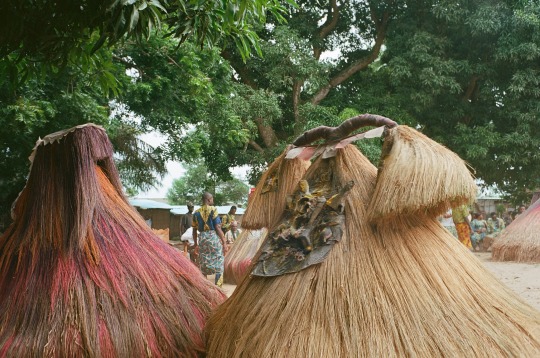

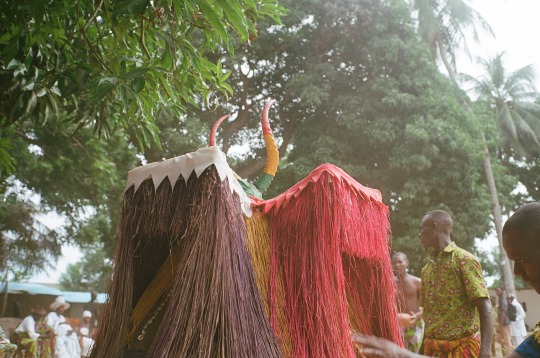
Zangbéto, 2023
365 notes
·
View notes
Text
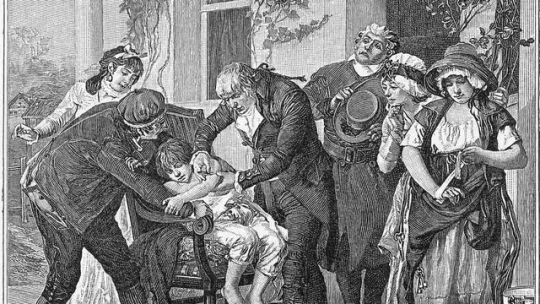
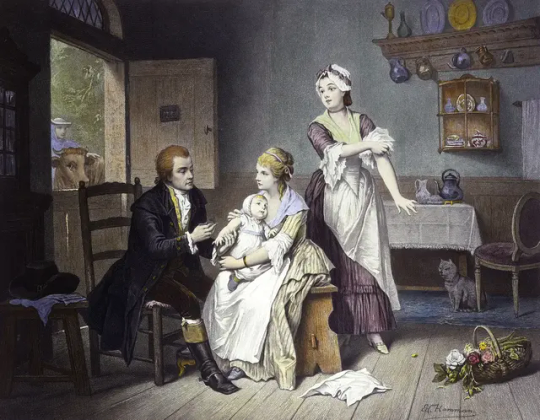


Onesimus (late 1600s–1700s) was an African man who was instrumental in the mitigation of the impact of a smallpox outbreak in Boston, Massachusetts. His birth name is unknown. He was enslaved and, in 1706, was given to the New England Puritan minister Cotton Mather, who renamed him. Onesimus introduced Mather to the principle and procedure of the variolation method of inoculation to prevent the disease, which laid the foundation for the development of vaccines. After a smallpox outbreak began in Boston in 1721, Mather used this knowledge to advocate for inoculation in the population. This practice eventually spread to other colonies. In a 2016 Boston magazine survey, Onesimus was declared one of the "Best Bostonians of All Time"
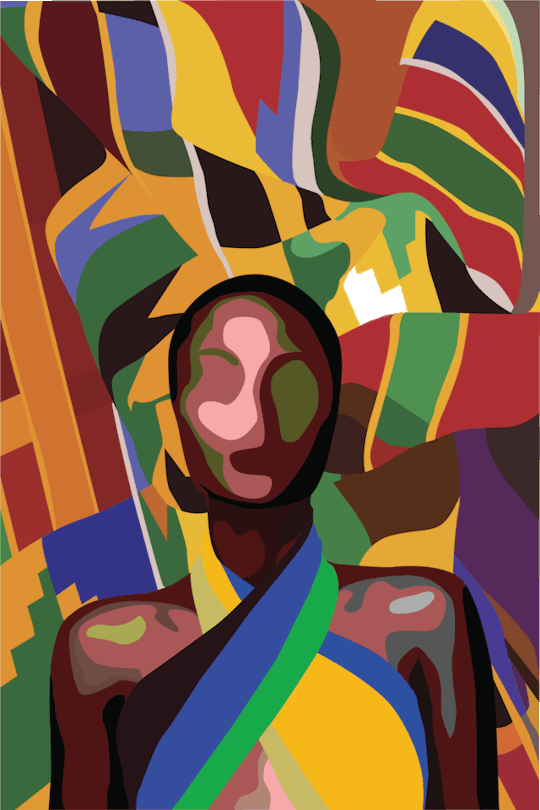
Onesimus's name at birth and place of birth are unknown with certainty. He was first documented as living in the colonies in 1706, having been brought to North America as an enslaved person. In December of that year, he was given as a gift by a church congregation to Cotton Mather, their Puritan minister of North Church, as well as a prominent figure in the Salem Witch Trials. Mather renamed him after a first-century AD enslaved person mentioned in the Bible.The name, "Onesimus" means "useful, helpful, or profitable".
Mather referred to the ethnicity of Onesimus as "Guaramantee", which may refer to the Coromantee (also known as Akan people of modern Ghana).
Mather saw Onesimus as highly intelligent and educated him in reading and writing with the Mather family (for context, according to biographer Kathryn Koo, at that time, literacy was primarily associated with religious instruction, and writing as means of note-taking and conducting business)

In 1716 or shortly before, Onesimus had described to Mather the process of inoculation that had been performed on him and others in his society in Africa (as Mather reported in a letter): "People take Juice of Small-Pox; and Cut the Skin, and put in a drop." In the book, African Medical Knowledge, the Plain Style, and Satire in the 1721 Boston Inoculation Controversy, Kelly Wisecup wrote that Onesimus is believed to have been inoculated at some point before being sold into slavery or during the slave trade, as he most likely traveled from the West Indies to Boston.

The variolation method of inoculation was long practiced in Africa among African people.
The practice was widespread among enslaved colonial people from many regions of Africa and, throughout the slave trade in the Americas, slave communities continued the practice of inoculation despite regional origin.
Mather followed Onesimus's medicinal advice because, as Margot Minardi writes, "inferiority had not yet been indelibly written onto the bodies of Africans."

#african#afrakan#kemetic dreams#africans#brownskin#brown skin#afrakans#african culture#afrakan spirituality#smallpox#vodun#obeah#margot minardi#ghana#akan#Salem Witch Trials#smallpox outbreak in Boston#Massachusetts.#Coromantee#puritans
94 notes
·
View notes
Text
More Takes On The Voodoo Controversy

Another black person who is versed in the subject matter has it that the practice is still a big taboo and but there is herbal medicine practiced. Sometimes the two are mixed together, but the latter is more respected than the former.
#helluva boss#helluva boss critical#helluva boss criticism#helluva boss critique#vivziepop criticism#vivziepop critical#vivziepop#anti-vivziepop#hazbin hotel#hazbin hotel critical#voodoo#vodun#juju#asiri
40 notes
·
View notes
Text
Hey y'all.
Um since a lot of you don't know, Damballah? Is an actual god from the Vodun Haiti pantheon.
And according to Haitian lore, he is kind, patient, and peaceful....
That's how fucking bad the Chucky movies and series have represented him.
To the people who have watched this show and practice Vodun, or have connections to it, I am so damn sorry.
41 notes
·
View notes
Text
March 7th, Full Moon in Virgo
The full moon taking place on March 7th, 7:42 a.m. Eastern standard Time is going to be taking place in the mutable earth sign of Virgo.
This Moon carries with it the energy of a bated breath. With the sun and moon in a T-square configuration with Mars in Gemini, This speaks to an incredibly nervous, anxious and excitatory energy. This denotes an explosive, or cataclysmic quality particularly in regards to information. Lies, secrets and information That is otherwise obfuscated will be exposed. This can be the start of conflict, intention on a personal and collective level. This tension is elevated by the stellium in the zodiac sign of Aries including Vesta, Jupiter, Chiron, Venus and Juno. The conflict is being brought towards the surface to reach a fiery climax and conclusion. Emotions will be high during this moon, and people will be prone to outbursts of anger. Beware of physical danger this moon, such as cuts, burns, and accidents. This can also manifest as wildfires.
With the sun in Pisces being conjunct mercury in detriment and Neptune dignified, this portends a time of metaphorical and literal flooding. This is a bad planting season,with this configuration and Ceres in retrograde position in Libra so hold off on your spring planting.
With two major hitters at the anaretic degree (29°) and one being 29°59 there is a suspended element of anxiety and collective strife and a final gift from Saturn before he exits the place of power, most likely related to harmful collective legislation, technology, and social media. he's been in power since 2017(Capricorn-aqua) this is an experience we will not have for another 20 years. When we wake up, Saturn will already be in pisces changing the energy dramatically to one of confusion,dreaminess, and melancholy fantasy. Mutable signs(rising,sun,moon, stelliums) are in for a doozy this full moon.
Uranus is making positive aspects this moon denoting radical, surprising and positive changes and financial opportunities for the environment and collective.
Use this moon to get lot prepare for the upcoming changes
Workings:
Power
Domination
Sex
Healing
Cutting ties
Release
#astrology#western astrology#horoscope#astrologer#full moon#full moon in virgo#march 7th#mysticism#occultism#spirituality#pagan#paganism#hoodoo#obeah#myal#voodoo#vodun#vodou#vudu#spiritualism
85 notes
·
View notes
Text
Mama Wata.

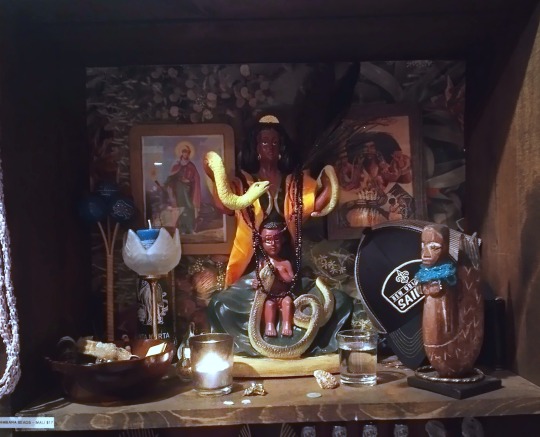
Mami Wata Altar in New Orleans.
There's so much in this spirit but I just wanted to give my thoughts on her... Mami Wata or Mother of Water is one of a group of water spirits, some can be male but usually female. In African spirituality that worship a pantheon of water spirits that's popular in South East Nigeria there were also trading routes that brought Mami Wata's across the world.
She is a water spirit or Simbi spirit or a mermaid who is deeply rooted in Southeastern Nigeria a people who speaks of Mami Wata as a fertility goddess and associated her with sex and seduction like most mermaids are around the world. Mami Wata can seduce, bewitch, and intrigue humans especially men.
According to one legend, Mami Wata was very beautiful black woman with a voluptuous figure. She had long black hair, an entrancing gaze, a beautiful singing voice, and the lower half of her body was a tail or serpent. Like many other mermaids, Mami Wata like shinny objects like mirrors, jewelry, and intricate combs. Mami Wata is often depicted to have a large snake wrapped around her torso and it’s head on her breasts.
She's mostly is identified by others as Lubana, Martha the Dominator, La Siren, Yemaya, Martha the Dominator and various Bori spirits. I personally don't think she's is sincerise with these others spirits because there are many spirits and deities of water like mermaids from cultures all over the world.
Some do identify her as Snake Charmer the big snake wrapped around her is Damballah, and then theirs a smaller one that can be Ayida Wedo.
She has now became one the most successful African deity of modern times. While other deities are dismissed by Christianity and Islam which is ok.
She is a beautiful but can be vengeful if messed with the wrong way. That's why I say always approach the spirits the wright way not the internet way.
Mami Wata has many followers or devotees all over who performs different ceremonies/ rituals to her. Sometimes they may wear a cloth snake wrapped around the waist and have altars devoted to her that are decorated in various colors all these things help them get in a trance-like state when dancing.
Mami Wata has the ability to shapeshift into a mermaid, fish, large snake or a beautiful young woman. With skin that's describe as far skinned black women who wears a white clay or chalk like substance on her skin, some people say she's light skin but again there is more then one Simi or mermaids around the world so that tell me she can appear to sime one as light or dark skin.
Mami Watas role as a protector of mothers and children's health.
Mami Wata's is called upon for protection of the home, mothers and children also for fertility, wealth, love, good fortune.
Her colors are Red and White.
Offerings she likes gifts of good food and drink like good smelling drinks/alcohol, fragrances like powders, incense, and soaps and also jewellery.
#mami wata#like and/or reblog!#spiritual#google search#southern hoodoo#follow my blog#african diasporic#african spirituality#African deities#Vodun#voodoo church#follow me#reblog and follow#like or reblog#like post#ask me questions#message me
7 notes
·
View notes
Text
EXPLORING THE DIFFERENCES BETWEEN HOODOO AND VOODOO

Hoodoo and voodoo are two ancient forms of magic that have been around for centuries. However, these two forms of spiritualism are often confused with one another. Many people typically use the terms synonymously – and with good reason. They are closely linked as they are both spiritual systems derived from African traditional religions.
However, they somewhat differ in their origins, methods, and practices. Though both share the same goal of harnessing the power of supernatural forces to bring about desired outcomes. Hoodoo and voodoo practitioners use various techniques, such as spell casting, rituals, incantations, and talismans, to achieve their goals.
Hoodoo is an African-American folk magic system rooted in African spirituality. Contrarily, voodoo practiced in the Americans is said to come from Haiti, though it likewise has West African roots. Despite the similarities between these two belief systems, they are distinct from one another and should be recognized as such.
HOODOO BELIEFS AND PRACTICES
Hoodoo is a combination of traditional African beliefs and practices, as well as indigenous folk magic. In some instances, European folk magic has been infused into Hoodoo practices due to colonial influences. This distinct African American form of esotericism originated during the period of slavery in America. It is an intriguing blend of African spiritualism and religious beliefs adopted by many in the African diaspora.
Also, while Hoodoo is considered a distinctly African American tradition, its roots can be traced to many parts of Africa. Strong Congo, Yoruba, and Vodun influences exist within the tradition. Additionally, many elements of Islam are present within the tradition. As a result of the transatlantic slave trade, the practice also has major Christian influences as the Bible is used in much of the conjure work.
HOODOO BELIEFS
Hoodoo practitioners believe in the power of the natural world. And they use it to help them achieve their goals. Its roots primarily stem from the American South, where various botanical elements are used in magic and conjure work. It has evolved over the years to include more elements as other people groups have integrated into this practice.
Hoodoo practitioners primarily cling to the belief in ancestral spirits and a Sovereign Creator. Though the believers work with and acknowledge the existence of other spirits, Hoodoo doesn’t have a defined system of deities. This element contrasts other African-derived spiritual systems practiced throughout the diaspora.
HOODOO PRACTICES
Hoodoo combines many things, including astrology, herbalism, and magic. Because of its many influences and occultic past, Hoodoo can look very different from family to family or individual to individual. There isn’t a central governing authority for this practice. Many people had to go underground with their practices during the slavery era. As such, rootwork and conjure differ throughout the Hoodoo system. For more details about the Hoodoo practice, check out this resource.

Grann Briggite – 11 oz Black Mug // African Spirit Etsy Shop
VOODOO BELIEFS AND PRACTICES
Voodoo is an ancient religion with African roots that has been practiced in Haiti, Louisiana, and other parts of the Caribbean Islands and the Americas for centuries. It is a spiritual practice that incorporates elements of ancestor and nature veneration and the worship of various deities.
Voodoo followers believe in one God, but also in many spirits or loa who act as intermediaries between humans and the Divine. These spirits often possess people during rituals and ceremonies, allowing them to communicate with the Divine. Haitian and other voodoo rituals involve singing, dancing, drumming, and offerings to these spirits. Through these practices, believers seek guidance from their ancestors or gods on how to live their lives.
The use of herbs, roots, and natural elements is also prevalent in voodoo. In fact, many of the remedies used in voodoo are quite similar to those used in Hoodoo. These materials are believed to be imbued with powerful energies that influence events, heal ailments, and even grant wishes. By combining these elements in certain ways, practitioners of voodoo are able to create spells and rituals that bring forth desired results.
THE LOA OF VOODOO
Voodoo practitioners also rely heavily on a system of deities known as loa. These loa, or spirits, are believed to be powerful forces in the universe and offer guidance and protection to those who invoke them. Voodoo practitioners use various rituals and ceremonies to summon the loa and ask for their assistance in matters of love, luck, health, wealth, and more. With their help, practitioners can gain access to unseen forces that can help bring about positive change in their lives.
Some of the primary loa of the voodoo tradition include Papa Legba, Baron Samdi, Ezili Freda, Ezili Danto, and the like. The identities of these spirits are rooted in many West African spiritual practices, particularly the Fon and Yoruba traditions. Though elements of them can be seen within pantheons throughout Benin, the Congo, Egypt, etc. For more details about Haitian Vodou, check out this resource.
THE PRACTICAL DIFFERENCES BETWEEN HOODOO AND VOODOO
While Hoodoo and Voodoo are very similar, they are distinguishable by the culture from which they were derived. Moreover, the events, beliefs, and rituals associated with these two practices have also shaped their development over time. Though they appear very similar in scope and practice, it is vital to give due homage to the cultures that shaped these systems. In doing so, we pay due honor to the ancestral legacies of African people groups worldwide.
17 notes
·
View notes
Text
Water Spirits: La Sirene & Mèt Agwe 🧜🏽♀️ ⛵️🩵

titled: Son Mizik ou and Peny bò dlo
Translated to: Sound of your music and Comb near water both pieces are inspired by the mother of the Ocean.
Throughout history, the element of water has been associated with rich symbolism.
It is an archetypal symbol of birth, death, and creativity.
It is formless, containing potential form and possibilities.
It is the realm of dreams and the astral, the home of emotions, intuition, and inspiration.
Water dominates Haitian life, so it is no wonder that there are many religious beliefs centered on it. The Lord of the Water is Agwé, and his consort is la Sirène.
Because she lives between the ordinary and the magical, between the world of land and the world of the ocean, la Sirène is the keeper of occult wisdom.
As her name suggests, she also has the most beautiful voice of all the #Lwa — she is known as the Queen of the Choir.
La Sirene is the patroness of music; her voice is renowned as it carries over the seas, calling the men she will take as her lovers.
The spiritual nature of music cannot be defined by religion, culture, or genre. Music precedes and transcends all of those frameworks.
Music is, at its essence, the sound of spirit. When created from the heart and with truth and pure intention, music is a spiritual expression of the universal nature and the highest order.
Music is an integral part of our life as it is a way of expressing our feelings and emotions.
Always with her is Met Agwe, her husband, the spirit of the sea. They are the Divine Royal Couple manifested within the ocean, and they carry all of the mysteries contained within the sea within themselves.
As with Met Agwe, La Sirene is a keeper of the secret knowledge of the sea, and she weaves this knowledge into the songs she sings for her children.

#lasirene#vodou#illustration#vodun#voodoo#spiritually#yemoja#agwe#lwa#spirits#haitianart#artists on tumblr#frontpage#culture#digitalartist#notes#reblog#new tumblr#artistontumblr#migrated from twitter#poets on tumblr#rada#thirdeye#ocean#elements
54 notes
·
View notes
Text
As African Americans, our ancestors had no other choice but to accept and embrace creativity, flexibility, innovation, cleverness, etc.. These are the building blocks of Hoodoo and AA culture as a whole. If they had practiced the same way their ancestors did in Africa, we wouldn’t have made it. If they had practiced the same way our cousins did in Cuba/Haiti/Brazil/DR/Trinidad, we wouldn’t have made it. If they had incorporated the Orishas, Lwa, Akom, or other higher spirits in Hoodoo, we wouldn’t have made it. Respect that and stop tethering these ancient deities into our spiritual system.
#hoodoo#african traditional religions#african diasporic religions#rootwork#orishas#Lwa#ancestors#african spirituality#atr#adr#santeria#orisha path#voodoo#vodun#ifa#closed religions#closed practice#adosreligion#African American culture#african diaspora#ados
127 notes
·
View notes
Text
WEST AFRICAN RESOURCES
The Anthropological Masterlist is HERE.
West African is an African region that spans the western part of the continent.
AGNIS ─ “The Agnis, or Anyi, people are an African people. They are native to the Ivory Coast.”
─ Anyi Information
AKAN ─ “The Akan people are an African people. They are native to Ghana and the Ivory Coast.”
─ Pre-Colonial History of Ghana
─ Modern-Day Akan
─ Akan Dictionary
ANNANG ─ “The Annang, or Anaang, people are an African people. They are native to southern Nigeria.”
─ Annang Dictionary
ASHANTI ─ “The Ashanti, or Asante, people are an African people. They are native to the Ashanti region in Ghana.”
─ Ashanti Information
─ Ashanti Culture
─ Ashanti History
BAMBARA ─ “The Bambara people are an African people. They are native to West Africa.”
─ Bambara Art
─ Bambara Language (in French)
BASSARI ─ “The Bassari people are an African people. They are native to the Kédougou region of Senegal.”
─ Bassari Language (in French)
EWE ─ “The Ewe people are an African people. They are native to the coastal areas of West Africa.”
─ Ewe Information
─ The Anlo-Ewe People
─ The Adze in Ewe Mythology
FON ─ “The Fon, or Dahomey, people are an African people. They are native to south Benin and southwest Togo and Nigeria.”
─ The Dahomey Amazons
IBIBIO ─ “The Ibibio people are an African people. They are native to the coasts of southern Nigeria.”
─ Ibibio Language Resources
─ Ibibio Masks
IGBO ─ "The Igbo, or Ibo, people are an African people. They are native to Nigeria.”
─ Igbo Culture
─ Igbo Dictionary
ISOKO ─ “The Isoko people are an African people. They are native to the Isoko region in Nigeria.”
─ Isoko Information
─ Isoko Culture and History
─ Isoko Dictionary
KONGO ─ “The Kongo people are an African people. They are native to the Atlantic coast of central Africa.”
─ Kongo Language Resources
─ Kongo Dictionary
KONO ─ “The Kono people are an African people. They are native to the Kono District in eastern Sierra Leone.”
─ Kono Culture and Rituals
NIGERIAN ─ “The Nigerian people are an African people that share the Nigerian culture. They are native to Nigeria.”
─ Nigerian Information
─ Colonial Nigeria
SERER ─ “The Serer, or Seereer, people are an African people. They are native to Senegal.”
─ Serer Information
─ Serer Language
TALLENSI ─ “The Tallensi, or Talensi, people are an African people. They are native to northern Ghana.”
─ Tallensi Culture
─ Tallensi Development and Culture
URHOBO ─ “The Urhobo people are an African people. They are native to the Niger Delta in Nigeria.”
─ Ughelli Kingdom Information
─ Urhobo Dictionary
VODUN ─ “Vodun, or Vodon, is a West African religion. It originates in West Africa.”
─ Christians and Vodun
YORUBA ─ “Yoruba, or Isese, is a West African religion. It originates in southwestern Nigeria.”
─ The Yoruba People
─ Yoruba Culture (in Spanish)
─ Yoruba Mythology
#resources#agnis#akan#annang#ashanti#bambara#bassari#ewe#fon#ibibio#igbo#isoko#kongo#kono#nigerian#serer#tallensi#vodun#yoruba#west african
119 notes
·
View notes
Text




Ganvié, 2023
Kodak Portra 400 / Leica M6
39 notes
·
View notes
Photo
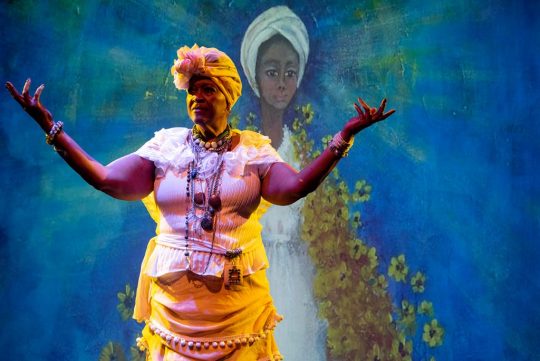

THE IFA CONCEPT OF SOCIOLOGY
Yoruba culture has used the Ifa paradigm of the cosmos as the basis for building their major cities. The structure of the Yoruba Nation was a federation of city states. Each city was ruled by an Oba. In ancient times the Oba was never seen by his subjects, so he became the invisible nucleus of the circle that formed the city. He was surrounded by a female council of elders called Odu and a predominantly male council of elders called Ogboni. The city itself was supported by male and female work parties who tended to divide their labor along gender lines. The men were traditionally farmers and the women traditionally controlled the market place. Both men and women participated in craft guilds that preserved the techniques used in the arts. The cities were built in a circular formation with the compound of the Oba at the center. The symbolic image of Yoruba culture appears as follows:

There is some archeological evidence in the Yoruba cities of Ile Ife and Oyo that suggests that this design was used as the basis for the actual layout of those cities. The extent to which this occurred in other cities has not been thoroughly researched. It does appear that this structure was used in pre-colonial times as the basis for establishing political and religious institutions both of which were built upon the cosmological model found in Ifa.
Variations on this structure involved the system of establishing the location for sacred shrines. The system is called Gede which is a very old form of astrology. In Gede the path of solar bodies and planets is marked in relationship to the ways that they transverse the landscape. Celestial bodies are believed to enhance the ase (inherent power) of natural forces that arise from the Earth. By correlating the influences of Olorun and Ile, the ancient diviners were able to consecrate their shrines in places that reflected the essence of specific Odu.
Earth (ile) was considered a reflection of Heaven (Orun) and the layout of Yoruba cities was designed to make them mirrors of the cosmic order. The religion of Ifa originally comes from the city of Ile Ife. In lfa scripture, Ile Ifa is described as the original home of humans. The words: "Ile Ife” translate to mean; "Spreading Earth." So Ile Ife is a city and it is any place where land formed on Earth that allowed for human evolution to take place. Ifa scripture also refers to Ile Ife as a Spiritual place. It is the home for those ancestors who have returned to Source.

D. THE IFA CONCEPT OF PSYCHOLOGY
Perhaps the most accessible manifestation of Odu is through the portal of individual consciousness. Ifa teaches that Odu represent the energy patterns that create consciousness. They are analogous to what Carl Jung called archetypes of the collective unconscious. Jung believed that there exists a set of primal patterns that form the content of self-perception and place the self in relationship to the world. According to Jung, these patterns remain abstract until the unconscious gives them a cultural and personal context. In both Jungian psychology and the Ifa concept of consciousness, Odu (archetypes) can be revealed through dreams, where they take on personal qualities and manifest as mythic drama. By grasping this particular manifestation of Odu, Ifa teaches that it is possible to create internal balance which is the foundation of living in harmony with Nature.

Ifa psychology is linked to the concept of ori. The literal translation of ori is "head." This is a limited definition because ori also implies consciousness and Ifa cosmology teaches that all Forces in Nature have ori or consciousness.31 Because Ifa believes in reincarnation, every ori forms a polarity with ipori. The ipori is the eternal consciousness that exists in Orun (Heaven).32 It is the ipori that forms the link between past and future lives. If a scripture describes the ipori as the perfect double of ori. According to Ifa cosmology, every ori makes an agreement with Olorun prior to each incarnation.33 This agreement outlines the type of life that is to be lived and the lessons that are to be learned in a given lifetime. At the moment of birth the content of this agreement is lost to conscious thought. Part of the process of establishing internal balance is viewed as the task of remembering the original agreement between ori and Olorun.

This agreement is the source of individual destiny. Because divination is considered a method for discovering destiny, all divination based on Ifa is related to the question of enhancing the alignment between ori and ipori.
The link between ori and ipori lies within ori inu.35 The Yoruba words; "ori inu" translate to mean; "inner head." This is a reference to what Jung called the individual consciousness or self. Ori inu is the nucleus of that circle of Forces that creates self-awareness.
In addition to the polarity between ori and ipori, ori inu is the center point of the polarity between ara and emi. Ara is the physical body. Ifa psychology includes the heart (okan) and the emotions (egbe) as part of the physical self. According to lfa, the nature of one's ipori can only be grasped if the head and the heart are in alignment. In other words, the mind and the emotions must be in agreement if spiritual insight is to occur. Similarly, Jung understood that a conflict between the mind and the emotions is one of the sources of mental illness.36 In Ifa this conflict is called ori ibi. It is difficult to make a literal translation of ori ibi, but the term suggests a lack of alignment between ori and ipori. When the ori and ipori are functioning as one, it creates a condition called ori ire. A literal translation of ori ire would be; "wise head." .Jung referred to this condition as individuation, which was his basis for defining mental health.37
Ara or the physical body exists in polarity with emi. The Yoruba word emi means; "breath.” Ifa teaches that the breath of life comes from Olodumare and contains the eternal essence of consciousness. Emi in this context would translate to mean; "soul." The Ifa symbol of self would appear as follows:


#ifa#vodun#kemetic dreams#traditional african religion#african spirituality#african culture#west africa#odunlade adekola#ori#orunmila#oya
464 notes
·
View notes
Text

Vodoun Gambada
As a protector, Gambada devours and returns to sender the evil eye, negative entities, witchcraft and sorcery sent to their adeptes. It is said that those who harbor ill intention or seek to destroy an adepte of Gambada, seek their own death.
Gambada unobstructs obstacles and delivers abundance swiftly while protecting the receiver of these graces.
Cults of Gambada are found among the Ewe and Fon across Bénin, Togo and Ghana.
#Vodun#Vodun Hwendo#Vodou#Gambada#african traditional religions#african ancestry#vodoun#vodou blood#vodou lineage#spiritism#witchcraft
45 notes
·
View notes
Text
Finally Answering Oshun’s Call: Dream Decoding, Fire Sign Energy, North Nodes, & Other Spirits
youtube
#Oshun#ochun#Ochún#Orishas#ancestors#black witch#vodun#african spirituality#magick#art#spells#spirituality#conjure#Astrology#black girl magic#melanin#women’s rights#alchemy#energy#Solar Plexus#sacral chakra#chakras#fire signs#yemaya#elegua#papa legba#mami wata#Yemoya#yemoja#witchcraft
12 notes
·
View notes
Photo

"Baron Samedi" by Poisoner.
#poisoner#baron samedi#haitian folklore#haitian mythology#vodun#voodoo#cemetery#graveyard#ai#neural network#halloween
35 notes
·
View notes
Text
Different Styles Of Voodoo


When I hear that a country or city don't practice real Vaudou aka voodoo it bothers me when that person don't really know what voodoo, Vodou, Vodun etc is. Some think that it started in Haiti or that it isn't real if your not initiated in Haiti. So I wanted to make this quick post to show a few of the different styles of voodoo there are. Do the proper research and choose which practice calls to you.

First up is African Vodun is an is the birth place of vodun a ancient religion practiced by some 30 million people in the West African nations of Benin, Togo and Ghana. With its countless deities, animal sacrifice and spirit possession, voodoo — as it's known to the rest of the world — is one of the most misunderstood religions on the globe.

Second Haitian Vodou is an African diasporic religion that developed in Haiti. It arose through a process of syncretism between several traditional religions of West and Central Africa and Roman Catholicism. Vodou revolves around spirits known as lwa. Typically deriving their names and attributes from traditional West and Central African divinities, they are equated with Roman Catholic saints and the central ritual involves practitioners drumming, singing, and dancing to encourage a lwa to possess one of their members and thus communicate with them.
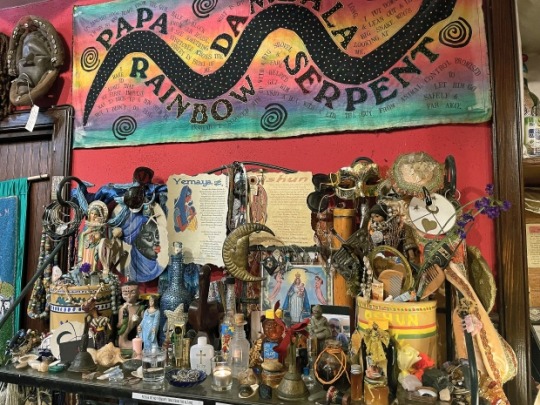
Third. Louisiana Voodoo, also known as New Orleans Voodoo, is an African diasporic religion which originated in Louisiana, now in the southern United States. It arose through a process of syncretism between the traditional religions of West Africa, Haitian Vodou and some christianity.
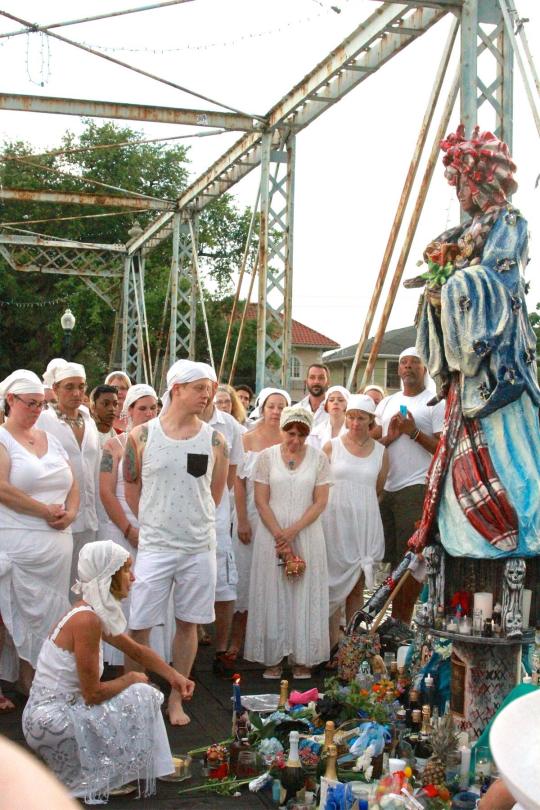

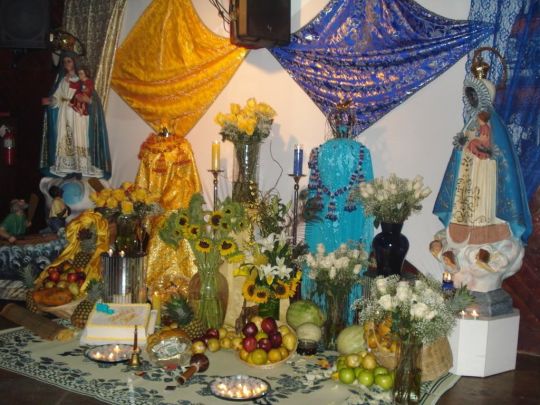
Forth Santería, also known as Regla de Ocha, Regla Lucumí, or Lucumí, is an African diasporic religion that developed in Cuba during the late 19th century. It arose through a process of syncretism between the traditional Yoruba religion of West Africa, the Catholic form of Christianity, and Spiritism. This is the same as the Ifa in Africa except they use saints also
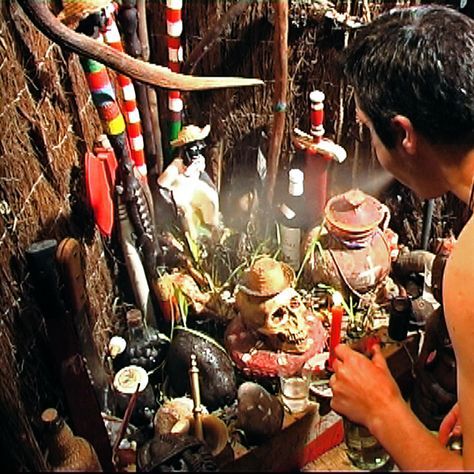

Fifth Palo: also known as Las Reglas de Congo, is an African diasporic religion that developed in Cuba. This is the first practice that hit first before Santeria. It arose through a process of syncretism between the traditional Kongo religion of Central Africa, the Roman Catholic branch of Christianity, and Spiritism.
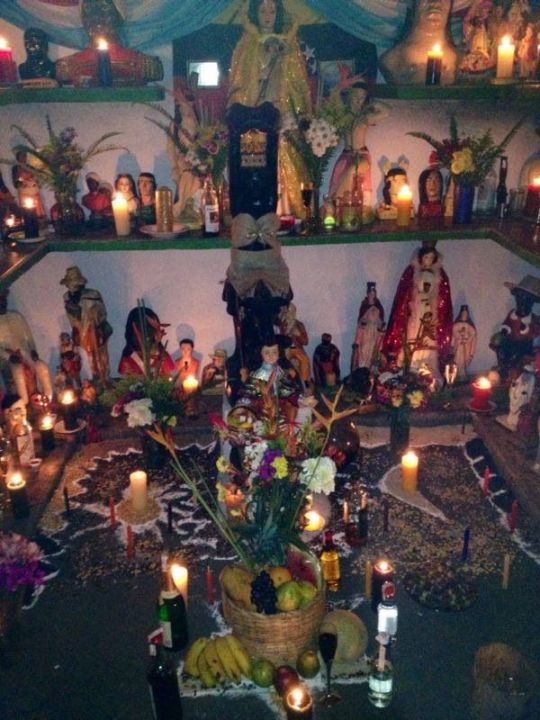
Sixth Espiritismo: Spiritism. Espiritismo (Spiritism) is rooted in the belief system that the spirit world can intervene in the human world and is widely practiced in Puerto Rico it not voodoo but I wanted to add it. At its most basic level, it invokes God and The Positive Spirits to divine for and assist the person. There is the use of a table covered with a white cloth, a large bowl full of water, and a crucifix. There are no initiations into this tradition and people work together at gatherings called Misas.
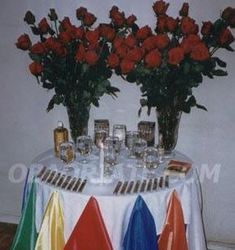
Seventh Sanse: Sanse is a cross between Spiritism and the 21 Divisions. In this tradition, the dead and the Lwa (or Misterios) are worked with spiritually. There is an initiation called a Bautizo (Baptism) and people work withall sorts of different spiritual tableaus, or frameworks.

Eight. Obeah, or Obayi, is a series of African diasporic spell-casting and healing traditions found in the former British colonies of the Caribbean. These traditions derive much from traditional West African practices that have undergone cultural creolization.
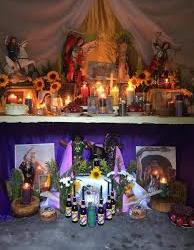
Ninth. Dominican Vudú, known as Las 21 Divisiones (The 21 Divisions), is a heavily Catholicized syncretic shamanistic religion of African-Caribbean origin which developed in the erstwhile Spanish colony of Santo Domingo on the island of Hispaniola. Now 21 Divisiones/Dominican vudu is very similar to the tchatcha/kwakwa/Deka lineage in Haiti. In 21 Divisiones and in the tchatcha lineage of Haitian vodou, is the north part of Hati and the initiations are different and the temples are organized differently.


Tenth. Trinidad Orisha, also known as Shango, is a syncretic religion in Trinidad and Tobago and the Caribbean, originally from West Africa.
I these are some of the voodoo style practices around the world .
#Types of voodoo#African practices#Voodoo#Vodou#Vodun#Spiritual#Voodoo Styles#Different voodoo#Voodoo styles#follow my blog#ask me anything#ask me stuff#like or reblog#like and comment#Spiritual information
43 notes
·
View notes